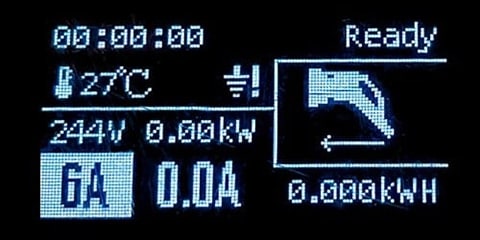As Electric Vehicles gain popularity, a new set of terminology has emerged, creating a learning curve for drivers unfamiliar with the jargon. To make the transition smoother, here’s a breakdown of key terms associated with electric cars:
- AC/DC: Alternating current (AC) powers homes, but electric vehicles require direct current (DC) to charge the battery. DC is faster as it bypasses the conversion step.
- BEV: Stands for Battery Electric Vehicle, an EV that runs solely on battery power.
- BIK: Benefit in Kind is a tax levied on company cars based on CO2 emissions. Electric cars tend to have lower BIK rates due to their zero emissions.
- CCS: The Combined Charging System is a common connector type that allows for fast or rapid charging of EVs.
- CHAdeMO: An early fast-charging standard, mostly being replaced by CCS.
- Charging Speed: Is the charge time of an EV from empty to full usually calculated from 20% to 80%. Larger batteries and slower charge points extend charging times.
- Chargepoint: The location or equipment where an EV is plugged in for charging.
- Dual Charging: This system allows two EVs to charge at the same time, though power is shared, resulting in slower charging speeds.
- EV: Short for Electric Vehicle, encompassing cars, vans, and even buses powered by electricity.
- Fast Charging: These chargers range from 7kW to 22kW, with some Tesla destination chargers offering up to 11kW.
- Granny Cable: A slower charging cable used with standard domestic sockets for slow and trickle charging.
- ICE: Internal Combustion Engine (ICE) refers to traditional petrol or diesel-powered cars.
- ICEing is when a non-EV parks in a space designated for EV charging, blocking access.
- kW/kWh: Kilowatt (kW) measures electric power, while kilowatt-hour (kWh) measures energy consumption. Larger batteries with higher kWh values allow EV’s to travel further on a charge.
- Miles per kWh: Similar to miles per gallon, this metric shows how far an EV can travel on one kilowatt-hour of electricity.
- Range: The distance an EV can travel on a full charge.
- Range Anxiety: The fear of running out of battery before reaching a charging station, though improved infrastructure and battery technology are alleviating this concern.
- Rapid and Ultra-Rapid Charging: Found along motorways, these stations offer 43-350kW charging speeds, drastically reducing wait times.
- Regenerative Braking: A feature in EV’s that captures energy from braking to recharge the battery, extending driving range.
- Single-phase vs. Three-phase Power: Most homes have single-phase electricity (up to 7kW charging) Some industrial sites may have three-phase power (22kW) which much enables faster charging.
- Smart Charging: Charging an EV when electricity rates are lower, typically during off-peak hours, saving money.
- Supercharger: Tesla’s proprietary fast-charging network, now expanding to serve non-Tesla vehicles.
- Tethered/Untethered: Tethered chargers have cables permanently attached to the station, while untethered chargers require you to bring your own cable.
- Trickle Charging: This is charging at its slowest and usually occurs at the end of a charge when battery capacity is beyond 80%. Trickle charging helps maintain the health of the battery.
- Wallbox: A home charging unit installed for faster and safer charging than using a standard three-pin socket.
- WLTP: Worldwide Harmonized Light Vehicles Test Procedure, a procedure that measures the official range of an EV, providing more accurate figures than previous methods.
Understanding these terms can simplify your EV journey, making it easier to navigate the growing world of electric mobility. As EV infrastructure expands and technology advances, the switch to electric driving is becoming more accessible for everyone.



